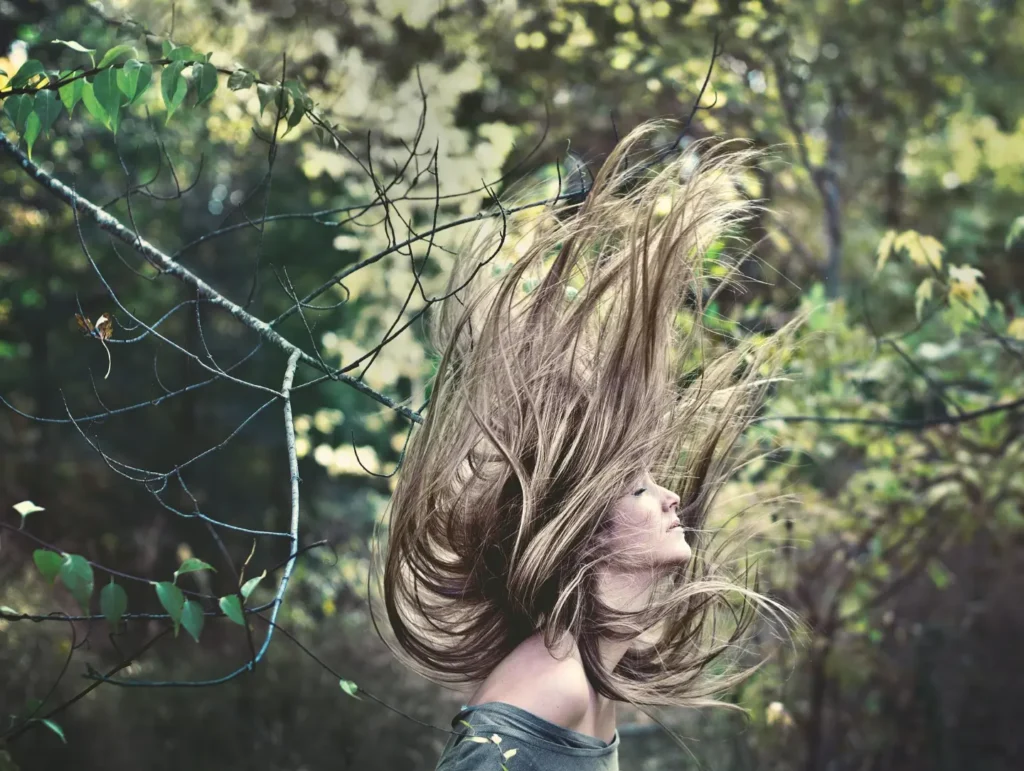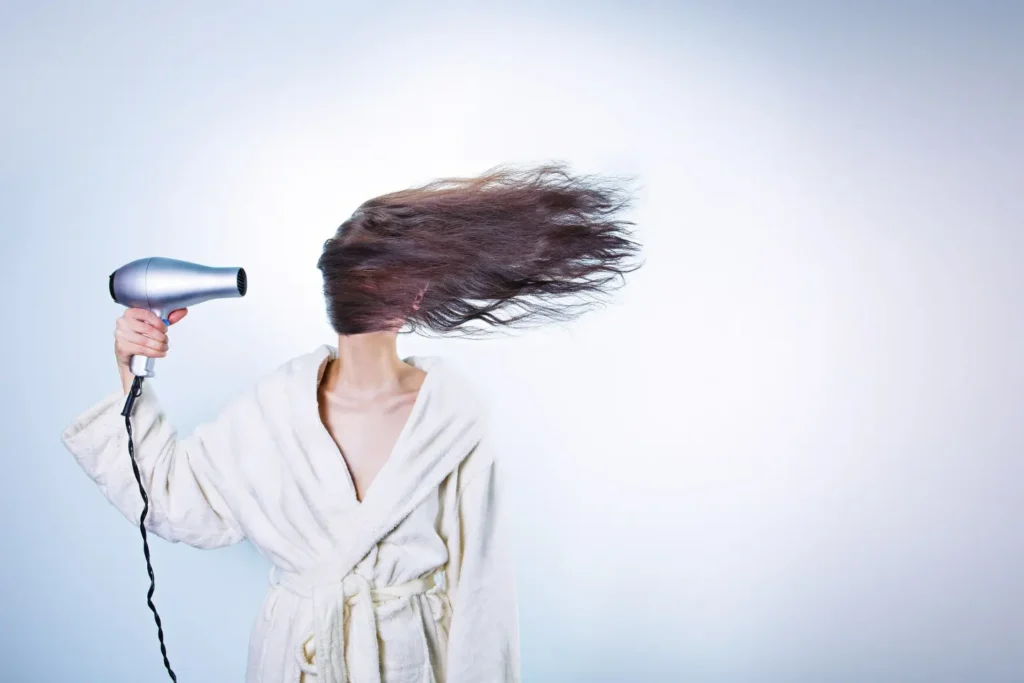Healthy hair care is about knowing your hair’s demands and making wise decisions rather than using the newest products. Your regimen will decide the long-term health and appearance of your hair, thin or thick, straight or curly. We will go over the finest techniques for washing, conditioning, styling, and hair protection in this all-inclusive guide to help your hair remain looking its best.
Learn Your Hair Type
You have to know your hair type before you can design the ideal healthy hair care schedule. Your hair maintenance type—fine, straight, coarse, curly—determines which products and techniques will best fit you.
- Thin or Fine Hair: Strong cosmetics quickly weigh down certain hair types. Search for light-weight shampoos and conditioners, free of which limp hair results. Products including silicone, such as dimethicone or cyclomethicone, are excellent for increasing volume without greasy hair. These cover the strands to make your hair seem fuller.
- Thick or Curly Hair: Thick or curly hair calls for extra moisture since thinner hair usually dries more slowly. Rich conditioners, leave-in treatments, and gentle brushing help curly hair stay frizz and breakage-free. Steer clear of vigorous brushing.
Select healthy hair care products catered to your type of hair. Avoid being misled by high-priced choices; usually, reasonably priced products work just as well as more expensive ones.
Proper Washing Techniques
Maintaining the health and natural brightness of your hair depends on proper washing techniques.
- Frequency of Washing:
Oily hair could need more frequent washing—sometimes even daily. Conversely, if your hair is curly, dry, or textured, washing it every few days or perhaps every two to three weeks is plenty. Should you find flakes, it could indicate improper product use or insufficient frequency of washing.
- Water Temperature and Its Impact:
Hot water dries and dulls hair by removing its natural oils. The ideal choice to retain the protective oils in your hair is lukewarm water. Additionally, increasing shine is achieved by a cold rinse at the end.
- Concentrate Shampoo on the Scalp:
When shampooing, pay more attention to the scalp than your entire hair length. This keeps the ends from drying out while still cleaning away extra oil and product accumulation at the roots.
Best Practices for Conditioning
Maintaining manageable and healthy hair depends on conditioning.
- Variations of conditioners:
For daily use, choose a rinse-out conditioner, leave-in conditioners for extra hydration, and deep conditioners for weekly treatments. Though the results only persist until the following wash, conditioners with protein can also help heal split ends.
- How to Apply Conditioner:
Apply conditioner to the ends only to prevent weighing your hair down for fine or greasy hair. Apply it all the length for added moisture in thick or curly hair.
- Frequency of Deep Conditioning:
At least once a week, treat your hair to a deep conditioning treatment; especially if it is routinely subjected to heat styling or color treatments.
Drying and Styling
The condition of your hair can be much affected by your style and drying technique.
- Proper Towel-Drying Techniques:
Once you’ve washed, gently blot your hair with a towel or a soft cotton T-shirt to draw moisture. Steer clear of rubbing to prevent frizz and damage.
- Use Heat Protectants:
Whether your blow-drying, straightening, or curling calls for a heat protectant spray or cream, This builds a barrier that reduces heat styling tool damage.
- Low-Heat or Heat-Free Styling Options:
Try low heat settings on your equipment or air-drying your hair. Flip your hair upside down and dry the roots for extra volume. Products with silicone bases can also give thin hair some bounce without heat.
Brushing and Detangling
Depending on how you brush and detangle, either your hair will benefit or suffer.
- Choosing the Right Brush:
A boar-bristle brush helps disperse oils for straight or wavy hair; for curly or thick hair, a wide-tooth comb is best for detangling without breaking.
- Proper Brushing Techniques:
Never brush wet hair—gently detangle from the ends with a wide-tooth comb. For curls, detangle in the shower while conditioner is still in your hair.
Protecting Hair While Sleeping
When it comes to hair health, your evening ritual counts more than you might believe.
- Use Silk or Satin Pillowcases:
Less friction these materials create lowers breakage, broken ends, and frizz. For curly hair especially, this helps greatly.
- Wrap or Braid Your Hair Before Bed:
Before bed, loosely braid or wrap your hair to cut tangling and breakage. You might also use a silk scarf to guard it overnight.
Nutrition for Healthy Hair
Maintaining good hair depends on your food just as much as your healthy hair care products.
- Eat Fish and Nuts for Healthy Hair:
Fish like salmon and nuts like walnuts provide omega-3 fatty acids, which nourish your scalp and maintain the strength of your hair. To provide your hair with vital vitamins and minerals, don’t overlook leafy greens, beans, and carrots.
- Hydration:
Getting enough water guarantees that your scalp stays moisturized, thereby avoiding dryness, irritation, and flaking.
Avoiding Damaging Habits
Over time, some regular healthy hair care routines might seriously harm your hair.
- Overuse of Heat Styling Tools:
Your hair might be weakened by too much blow-drying, straightening, or curling. Regular breaks from heat should be given to your hair; always use a heat protector, whether you utilize heat tools.
- Tight Hairstyles:
Too tight ponytails, braids, or buns may tug on the roots and cause breakage or perhaps hair loss. Let your hair down at night; stay away from looks that strain your scalp excessively.
Dealing with Specific Hair Concerns
Often occurring hair problems like frizz and dandruff have easy fixes.
- Calm Frizz:
While dry winter air can also induce static and frizz, humidity is usually blamed for frizz. Use a conditioner meant for your hair type and steer clear of overwashing, which could rob natural oils.
- Treat Dandruff:
Unlike common opinion, dandruff is a minor scalp problem rather than a result of a dry scalp. The greatest cure is certain shampoos, including pharmaceutical components. Oils aggravate dandruff; hence, stay away from using them on the scalp.
Protecting Hair from Environmental Damage
Your hair may be damaged by outside elements such the sun, chlorine, and weather; so, it is advisable to exercise care.
- Protect Hair from the Sun:
UV light can destroy your hair like it does your skin. When you’re in the sun, wear a hat or use a hair spray with UV protection.
- Swimming and Beach Hair Care:
To cut chlorine absorption, rinse your hair with fresh water before swimming. Wear a swim hat or use a leave-in conditioner for even more protection.
In essence,
Good hair care includes knowing your type of hair, choosing the correct products, and developing a schedule that fits you. These ideas can help you keep strong, glossy, and vivid hair every day, whether your focus is avoiding heat damage, feeding your hair from within, or selecting the correct conditioner.


